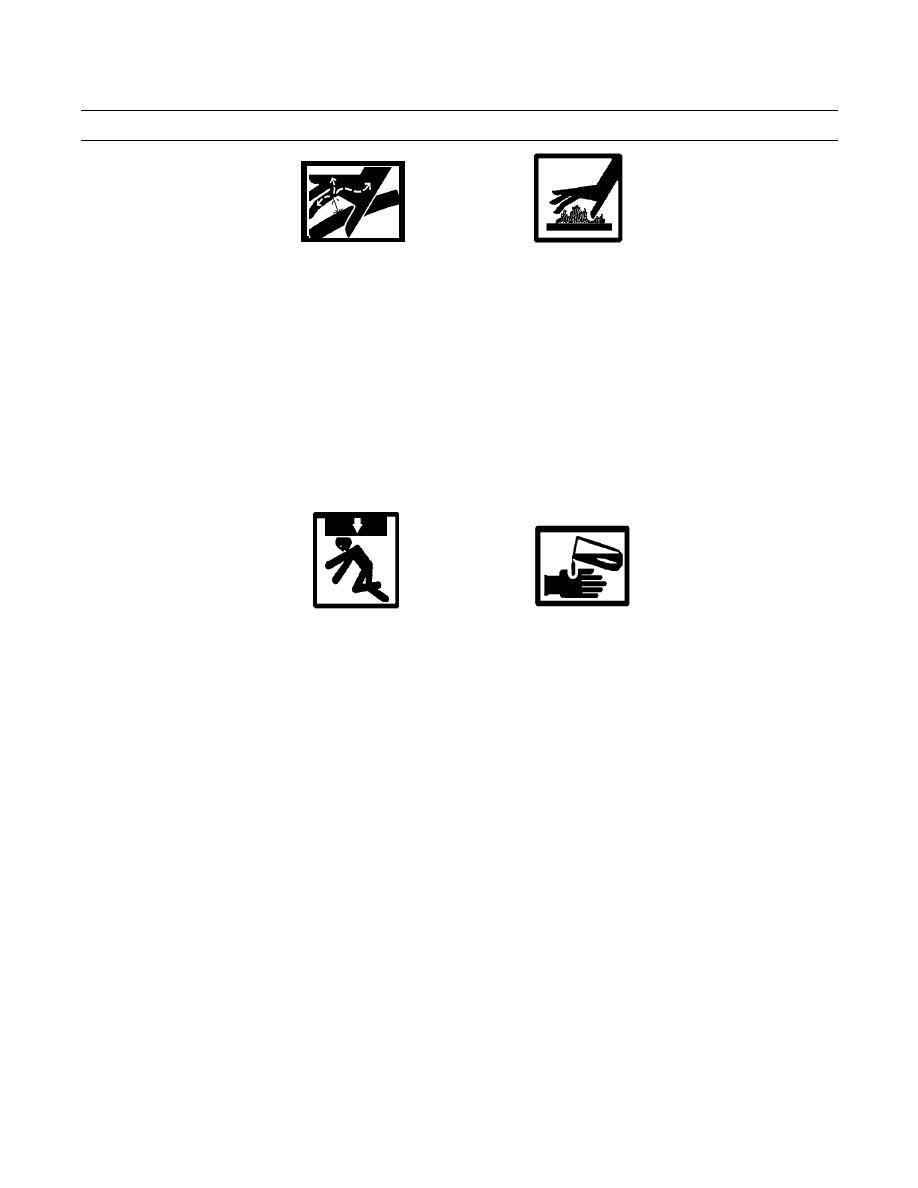 |
|||
|
|
|||
|
|
|||
| ||||||||||
|
|
 TM 9-2320-312-24-1
HYDRAULIC SYSTEM VALVES REPLACEMENT - CONTINUED
0128 00
WARNING
DO NOT disconnect or remove any hydraulic system line or fitting unless hydraulic system pressure
has been relieved. Tighten all connections before applying pressure. Escaping hydraulic fluid under
pressure can penetrate the skin, causing serious injury.
Search for leaks with a piece of cardboard. Protect hands and body from high-pressure fluids. If an acci-
dent occurs, see a doctor immediately. Any fluid injected into the skin must be surgically removed
within a few hours or gangrene may result.
At operating temperature, hydraulic fluid is hot. Allow hydraulic fluid to cool before disconnecting any
hydraulic lines. Failure to do so could result in serious burns.
Hydraulic fluid is very slippery. Immediately wipe up any spills. Failure to follow this warning may
result in injury to personnel.
CYLINDER LOCKING VALVE REMOVAL
WARNING
Ensure fifth wheel is fully lowered when removing locking valve. A raised fifth wheel will travel down-
ward when hydraulic hoses are disconnected, causing injury or death to personnel.
When servicing this vehicle, performing maintenance, or disposing of materials such as engine coolant,
transmission fluid, lubricants, battery acids or batteries, consult your unit/local hazardous waste dis-
posal center or safety office for local regulatory guidance. If further information is needed, please con-
tact The Army Environmental Hotline at 1-800-872-3845.
CAUTION
Wipe area clean around all hydraulic connections prior to disconnecting. Cap or plug all openings after dis-
connecting. Contamination of hydraulic system could result in equipment failure.
NOTE
Use a drain pan to capture hydraulic fluid in hoses. Dispose of hydraulic fluid in accordance with local
policy and ordinances. To minimize hydraulic fluid loss, tie up each hydraulic hose as high as possible
to frame or crossmembers. Clean up all spills.
Tag hydraulic hoses and note position of valve fittings to ensure correct installation.
1.
Disconnect two hydraulic hoses (1) from tee (9) at locking valve (2).
2.
Disconnect hydraulic hose (3) from right side of locking valve (2).
3.
Disconnect hydraulic hose (8) from left side of locking valve (2).
0128 00-2
|
|
Privacy Statement - Press Release - Copyright Information. - Contact Us |